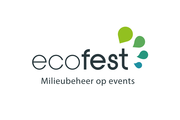Since 2004, we have been assisting event organizers, governments and companies that want to reduce their impact on the environment and climate. We are therefore happy to give you 5 concrete tips that you can use for your next (indoor) event.
Tip 1: Event location as a base
Your choice of location is crucial if you want to tell a sustainable story. For example, there is a "Green Key label" for event locations and hotels, among other things. If you choose this, you can rest assured that great efforts are being made in the field of the environment and climate.
A real winner? Go for a central location, close to public transport and easily accessible on foot or by bicycle. Then you will immediately check off our next tip, because mobility has the greatest impact!
Tip 2: Bicycle, bus and train come first
The largest CO2 emissions of an event come from the transport of all materials and the movement of your visitors.
To provide materials in a sustainable way, it is best to work with local suppliers as much as possible. Think of furniture rental companies, caterers, etc. within a radius of 50 km.
In addition, actively encourage your crew and visitors to take public transport, come by bike or carpool. Give them all the necessary information about travel times and the best connections by train or bus. State the latest departure hours on your website or socials. For example, have you also thought about a safe bicycle parking, possibly with free charging infrastructure? The following applies to international guests: for a distance of up to 700 km, the train is preferable to the plane.
Tip 3: Expensive energy
The second biggest impact of an event comes from energy consumption. Not unimportant in these times of high energy prices. Check which energy source your location uses (net power, green power, gas) and discuss how savings can be made.
At an indoor event you can easily lower the heating by a few degrees. After all, you can save 7% on your energy consumption per degree. From 21 to 19 degrees is quite pleasant. And in a place where many people come together, all that body heat automatically causes a temperature rise. In the cold months it is best to keep the outside doors closed. Afraid that visitors will not find the entrance? Provide some playful signage such as "Come in, it's nice and warm here!"
Tip 4: Plant-based food, kinder to the planet
Discuss the menu in advance with your caterer. Choose local seasonal fruits and vegetables as much as possible. You can achieve the greatest climate benefit here by offering as little meat as possible. If you do opt for meat, go for chicken on pork rather than beef. Or why not a completely vegetarian or plant-based offer? A caterer with the right know-how conjures up delicious dishes anyway!
Send your visitors a reminder a week before the event to confirm, so that you don't end up with large food surpluses. Avoid 'no shows' at all times. Feel free to order less, because by default 5 to 10% of visitors are prevented from coming. Is there any food left? Contact a local charity or food bank to collect the usable (usually still sealed packages).
Tip 5: Avoid and sort waste
An event always involves a lot of waste, but here too you can seriously reduce the mountain of waste with a few simple interventions.
Ask your suppliers to use as little unnecessary packaging as possible, such as plastic foils. Provide separate waste containers backstage with clear signage and explain to your crew why it is so important to sort.
As far as the furnishing is concerned, it is best to rent as many materials as possible (such as furniture, plants and decoration), because they are often reused. Recyclable materials such as cardboard are recommended for one-off prints or panels. A golden tip for a recurring event: keep your signage in and around your event location neutral and do not add a temporary logo or year. Think, for example, of the signposts in the parking lot, the toilets, etc. This way you can use them again and again. Appoint a material manager in advance who will collect and store this signage.
And how do you get your visitors on board? Provide clear sorting islands in strategic places. Because waste that is properly sorted in advance can be recycled better. In any case, this way you have much less residual waste. By the way, residual waste is 2 to 3 times more expensive to process (read: incineration!) than correctly sorted PMD, glass, cardboard, ...
Preferably serve the food in washable plates and bowls. For drinks, glasses or reusable cups are the best choice. You pour from a tap or large glass bottles with a deposit. If you do drink from individual plastic bottles or cans, place enough bins for PMD.
And finally: communicate before, during and after your event about all the sustainable efforts you make. Little by little we are working together on behavioral change and on "cleaner" events.
💡 Looking for sustainable suppliers for your event? Check our suppliers page: https://www.ecofest.be/nl/suppliers/
➡️ Still need some more help in advance to prepare a sustainable plan? Email info@ecofest.be.
Author: Petra Daniels
Duurzame leveranciers - Ecofest
Leveranciers – deze firma’s en organisaties verduurzamen jouw project
www.ecofest.be



